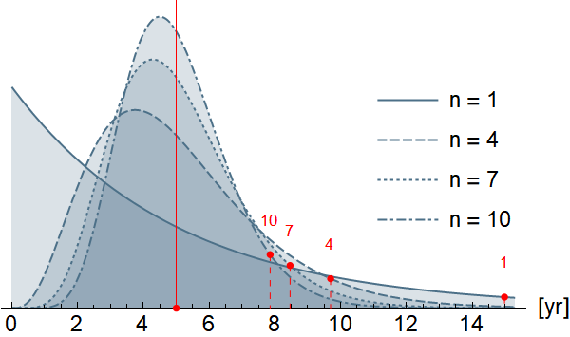社会科学
生態学,経済学,持続可能性における動的挙動を記述するモデルを作成することによって,複雑なシステムダイナミクスの理解が得られます.
Production Chain
Business process modeling (BPM) has become a ubiquitous activity in support of management decision making and business analytics. This example looks at a production chain for a company producing a durable good (e.g. intruder alarm systems).
The Model
Products will be produced at a constant rate of 100 units per month. The finished goods will be collected in a finished goods inventory, from which they will be shipped to customers. Units will remain in use for an average useful life of five years. After the useful life has expired, the units will be discarded. Whatever is scrapped will immediately be replaced by a new product.

There are 10 initial customers and a stock of 250,000 potential customers who will be turned into customers by "word of mouth" only. There is a constant contactRate of 10 people per month and the adoptionFraction is assumed to be 2%.
Simulation Results
The following graph shows different distributions for the useful life.

The dashed red lines show the 95th percentile and the red value above indicates the corresponding order n. If 95% of the products will have been discarded after 10 years, it turns out that n = 4 produces a delay distribution matching the assumption.
Wolfram System Modeler
評価版
ご購入
System ModelerはWindows,macOS,
Linuxで
日本語と英語でご利用になれます »
ご質問やコメントはWolframエキスパートまでお寄せください »